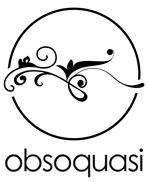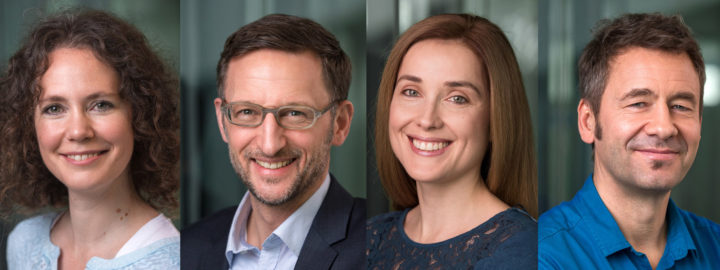The Psychology of Portrait Photography
Portrait Photography is 10% Photography and 90% Psychology
Portrait Photography is a truly fascinating discipline. On the surface it appears to be an ever repeating job: Person stands in front of the camera, photographer takes a good photo, selects, edits and delivers it, done. But the truth is, portrait photography is probably one of the complexest disciplines of photography and that’s because it has almost nothing to do with (technical) photography skills. It’s all about people skills – very specific people skills in fact…
A good portrait photographer has to:
- create a connection with the client in a very short amount of time
- have a good understanding of human nature in (aka being able to “read people”)
- be able to coach his client and be observant to changes in his behavior
- help the client relax and feel at ease
- be calm and confident – as well as be calming and confidence-inspiring
- be able to be humorous and light-hearted
- be genuinely curious and well-meaning about the person in front of the camera
- be understanding, tactful and respectful
- be actively perceptive of subtle differences in posture and expression
- and finally, yes, a good portrait photographer has to be decent at lighting, composition and the “tech stuff”
By listing these skills I hope I don’t come across as the guy who’s mastered all of them. I find myself in challenging situations much more often then I’d like to be. But my way of learning and digesting what I’m learning is often through writing, to collect my conscious thoughts, critically looking at what is going well and what isn’t. I would fully expect this article to need an update in a couple of years though.
I’d also like to thank my clients who have kindly sent their approval for their portrait to be presented as part of this article on portrait photography.
Understanding human nature
“Who is the person behind the mask?”
In German with have wonderful catch-all word called “Menschenkenntnis”. Literally it means knowledge of humandkind, but it’s more, it’s about empathising, understanding social norms, status and group behavior, reactions and emotions, and finally, it’s about listening. All of these skills are essential in portrait photography!
Who is that person, that just walked into your studio. Not just, how do they present themselves, but who is the person behind the mask. Because as hard as they might try to avoid it, that person behind the mask will show up for the shoot too. That’s why it’s so important to talk to people before you set them in front of the camera and at least try to catch a glimpse of the whole person as best as you can.
As a portrait photographer, it’s important to be human yourself. What I mean by that is this. Don’t think you have to be perfect! Laugh at your own mistakes or blunders. I used to think that the most embarrassing thing that could happen to me was if I started shooting with the lens cap on. But now I don’t worry about it anymore because it’s precisely small things like seeing the photographer laughing about himself this that can relieve tension in the client.
There are very fine and delicate aspects of “reading a person” and deciding how your reading should impact the image. Be respectful and tactful! If there’s a hardness in your clients face, try carefully to find out, wether this hardness is something they see as their defining trait or if it’s just a defence mechanism covering their softer side (which they would love to show). Again, be respectful and tactful, always!
Empathy and Compassion
“Never judge the person in front of the camera!”
“I don’t like having my photo taken.” is a very common phrase at the beginning of a portrait photography session. Or even more often: “I’m not photogenic.”. Or sometimes more specifically “I have this weird thing with my left eye/ mole on my cheek / assymmetry etc.”. These messages aren’t spoken to discourage you or make you nervous, or even to sabotage you. Remember, they actually would love to have a good photo of themselves as well. So these messages are nothing else than a little cry for help – “Help me to overcome my block” – wether it may be shyness or a negative self-image or bad past experiences with having one’s image taken.
This is a crucial moment to help your client to feel more at ease. Reassure them that many people feel that way in front of the camera. Now, I don’t think it’s a good “strategy” to try and convince them at this time of the opposite, because it will only come off as fake. What you can do however is to mention specific things you really like about them over the course of the shoot (not all at once). “Dude, your hair is fantastic!”, “I’m a big fan of laughing wrinkles!” or “that shirt works perfectly with your hair color, excellent choice!”. It’s not about flirting with the people in front of the camera! Mean everything you say, no matter how old, what shape, what sex of the person in front. Try to enjoy that process, allow yourself to be excited if you managed to catch a moment of genuineness.
Never judge the person in front of the camera! Because if people feel judged, you will never be able to create a good photograph of them. Instead appreciate, even love, the the rich and colorful variety of human beings and how each one is unique. Be blessed to have the chance to create a photo of them, WITH them.
Not judging also means, not feeling pity for them. Pity is a feeling born in condescension. “Poor guy with his lazy right eye – that’s really kind of unattractive” – that’s not helping anyone! Instead be empathetic, or better even, compassionate! What’s the difference again between pity, sympathy, empathy and compassion again…? Try to make it your challenge of making this the best image they ever had of themselves. For all the most common conditions that people belief make them unattractive, there are tricks to hide them or move the viewers attention away from it. That’s maybe a topic for another post though.
Help Them to Relax
In portrait photography, there are a few techniques for helping your client relax and feel more at ease with you. Let’s look at some.
Share your first mini-success with them. “This was a great one. Awesome! Now we have a good one already.” For them this means, oh good, if all goes awry now, at least I have a useable one already.”. Immediate relaxation – and very likely your next shots will be even better.
BYOF – bring your own friend. Have their friend stand next to you, also facing the subject. Tell the subject to quickly look at their friend, say them hi or give them a smile and then back to you. This trick has worked wonders for me. Because the smile that you’ll get back will be much more genuine than whatever they can “produce” themselves intentionally.
Engage their memory of an enjoyable place or time they’ve spent recently. I mostly ask them about their last vacation, but you might also ask them about what they like to do in their free time or the last concert they really enjoyed. In short, get them to talk about something they feel passionate about. Ask them if they have kids, how old they are and what their names are. Ask them about their favorite food. These questions will trigger their brain with positive memories.
Not all of these techniques work with every client. If you feel a strong resistance on his or her part, it’s sometimes best to set the camera down for a while and talk to them about their day. Often people appear on portrait shoots with their mind full of current events in their life. Encourage them, to set aside what’s on their mind for a moment and be here, with you. Then let them take a deep breath and try again.
Also remember, simply by talking to someone for a couple of minutes, you can’t expect them to relax completely. You are (probably) still a stranger to them and their inner stress, turmoil, insecurities or simply lack of focus in that moment can’t be magically blown away in an instant. You can only get them there part of the way. But even that will help a lot!
Create a Connection & Be Curious
“Sometimes, the deepest connections aren’t created over common strengths, but over shared weaknesses. Imperfect people are relatable people.”
Don’t just bombard your client with questions? If appropriate, share a little bit of your own live, especially when it overlaps in some way with the person’s life in front of you (“Hey cool, I like playing music too!”). However, don’t be self-obsessed and remain modest. In this situation it is more important than ever not to put the other person down by raising yourself up. Also, remind yourself that sometimes, the deepest connections aren’t made over common strengths, but over shared weaknesses. If you are bad with names, don’t be ashamed of it, a lot of people are! As I said in “reading people”: You don’t have to be perfect. Laugh about yourself. It will make you more relatable.
Mark Twain once said: “Each person is a book. Each year is a chapter”. To me, this means, that no person is ever dull. Each person has so much to tell, from the first instance to a life-time later. Be curious about the stories of the people you shoot, never hesitate to pause shooting if the chance arises to hear part of a person’s life story. You can eventually continue to shoot while they are telling the story, but make sure you also pause for a little bit to offer your undivided attention, then, slowly, ease back into shooting again.
Calmness and Confidence
“Your own calmness and confidence will naturally reflect in the calmness and confidence of your client.”
Calmness and confidence can be difficult to achieve, but you can certainly set some parameters ahead of time that will help you to feel more confident:
- Be prepared. Have everything set up as much as possible
- Have a plan
- Be mentally ready (leave your own bagage outside)
- Remember what works well for you
- Don’t rush into shooting, but take a few minutes to prepare the subject
You’ve probably guessed it already, your own calmness and confidence will naturally reflect in the calmness and confidence of your client.
A small siden note on the “be prepared” remark mentioned first. In portrait photography, it’s just as important to give your client the chance to come prepared. Since last year I’m sending them a leaflet with so helpful tipps on “How to prepare for my portrait photography session”. This has done wonders for me! Almost everyone comes with their hair washed and combed and women with the right amount of makeup. And no more garish colours or contrasty patterns in their clothes that would make my camera sensor freak out. 🙂
Humor
“You don’t have to be a stand-up comedian. Your goal is simply to make the experience as enjoyable as possible.”
Let’s keep this as simple as possible and just say, humor is a mode of personal expression whose success depends as much on the “sender” as well as on the “receiver”. Which is to say, everyone has their own kind of humor and not all kinds of humor work with everyone. As a matter of fact, most of my “jokes” are actually quite spectacularly bad, but they still serve as a way to relief some tension through laughter. And that’s the important part – You don’t have to be a stand-up comedian. Your goal is simply to make the portrait photography experience as enjoyable as possible.
Now, this doesn’t mean, you should simply “deliver” your best jokes. That would probably only raise the level of awkwardness. The best humor in portrait photography is of course situational humor, being able to react to what’s happening. With time this will become second nature to you. To be fair, it’s NOT second nature to me (yet). It still feels sometimes as if I’m awkwardly rummaging in my mental toolbag for a joke, any joke, desperately trying to ease the tension…
Posture and Expression
“It’s much simpler for people to emote a message, than to simply smile or look serious at the camera.”
Being able to read posture is extremely important in portrait photography. Because all humans constantly und unknowingly communicate with their bodies. And animals do so even more, because they lack the ability to speak. So over the course of our live experience, we’ve all become “posture and expression-reading supercomputers”, being able to catch the minutest of details in a persons posture and expression.
When a client asks me how he should look into the camera, I tell them that, the photo should be like an invitation to the viewers: “Hello, I’m John, I’ll be happy to meet with you.” and the viewer should have a unconscious reaction, like “He looks friendly, I’m looking forward to meeting with this guy.”. Now it’s not always the case that the portrait is intended as such an invitation. In recent months, clients asked me for a set of expressions from the session, with one being an invitation as mentioned, but others being more sincere. For that image, I’ll have them thinking of a quote about their work and thinking that quote (“Imagine there’s a speech bubble next to you”). In photography, this process is called emoting. And it’s much simpler for people to emote a message, than to simply “smile” or “look serious at the camera”. I’m sure you made similar observations.
Nevertheless, you are the person behind the camera and as such, you can still provide them with practical feedback to improve their posture. Let’s talk about some basic posture rules from my trick bag you can employ:
- Weight always on the front leg, leaning slightly towards the camera. This creates a sense of openness and interest towards the viewer.
- It’s very common to have one eye larger than the other. Always position them to have the larger eye closer to the camera.
- Parting in the hair on one side of the forehead? Then this side should generally be in front. I’ve found myself breaking this rule many times however…
- Let them hold their arms in a position that helps them to best relax their shoulders. It’s even allowed to cross one’s arms. I actually prefer this myself. It gives me stability in the shoulder area.
- Double chins – let them stick out their head ever so slightly towards the camera (without neither raising nor lowering the chin).
- Ask everyone if they have a side they prefer, but always shoot both sides regardless.
- Squinty eyes? Let them quickly focus on something else, like your shoes, and the right back up in your camera lens. The second they are focussing on your lens, their eyes will be slightly more open.
- Convex glasses reflecting your light source(s)? Try lowering their chin slightly. Or shoot them facing away from the main light. Or even ask them, if they’d be comfortable without the glasses.
- Stiff person? Set a pose with them, and them let them relax and fall back into that pose. Alternatively I’ve seen other photographers having their subjects turn around ones and land in the pose.
- People having trouble to produce a natural smile? Use the BYOF trick from above, even the old cheese trick might work, however I prefer to use other words with and “y” or “ee” at the end.
- Some of the general posing rules from fashion apply, but avoid a look that’s too pose-y. It’ll just make your client feel uncomfortable, or worse, objectified.
Gender Differences
When talking about gender differences and how they should affect the photography process, it’s important to grasp how much of a sensitive issue this is, for photography in general but especially for portrait photography. Let me just pick out the two of the most relevant reasons for this. First of all, gender images, especially gender roles, have changed tremendously in the last 50 years. So much so in fact that a lot of people go through a sort of gender identity crisis at least during part of their development. What does it mean to be a male, that’s a question I’ve asked myself profoundly in my early 20’s. And secondly, photographers are of course under constant scrutiny with regard to their role in the process of the objectification of women. So on one hand, we experience a great equalisation of the genders – a masculinisation of women and feminisation of men, splitting work and home duties, a trend towards equalisation of payment. And on the other hand we see woman (and men) as desire objects in fashion and advertisement all around us – “sex sells”. The latter wouldn’t be possible without the work of photographers. This is of course shaping the public image people have of us photographers. So don’t be surprised if every word you say will be judged against people’s preconception of your job – especially if you are male!
But can we completely ignore gender? Should be photograph women and men exactly the same? I don’t think that’s the answer either. I’ve had positive and negative experiences with openly talking about gender during the photo shoot. Some clients really appreciated that I gave them a choice to express either their female or male side (regardless of their biological gender), while others might felt that they are being classified into a gender stereotype by talking about these options. All of which is perfectly understandable.
So what can we actually do? I’ve come to realise that maybe the best approach is to try and first get an understanding of your client’s relation with his or her gender. How do they cloth themselves, how much attention is been given to their figure and make-up, are they wearing jewelry, how is the sound of their voice, how do they walk? All of this can give you a clew as to how important their gender identity is to them. If you don’t think it’s a defining feature, then simply don’t talk about gender! Instead, try out different approaches and always get feedback from the client by showing them the last couple of photos. They might not be able to express in words how they want the world to see them, but they will recognise that person in a photo immediately.
What About the Actual Photo Tech Stuff!?
“While having a technical foundation is important, that’s actually the easy part of portrait photography.”
Yes, you need to know about the technical aspects. Not nailing the focus can screw up a lot of good shots for sure, so can having suboptimal lighting. But let’s face it, there are thousands of tutorials about portrait lighting on the web.
While having a technical foundation is important, that’s actually the easy part of portrait photography. The psychological part is much more challenging. I think that every customer poses his own riddle we need to find a solution too or work around. I’m still facing severe challenges all the time! And I have to admit, I still don’t always succeed in creating that one photo, I’m 100% happy with. But with time, we all get better.
Don’t be drawn into thinking, that all you need is a set of manipulation techniques – psychological tricks! It’s rather about learning to fully accept and love people, no matter who they are. This is a realisation I’ve come across only a short while ago. I noticed that while retouching the images, I found myself having conversations with the people I’m retouching in my head. I was recalling our conversations, laughing with them, wonder what kind of father they were at home, or what kind of colleague, and so on. As a result, these images turned out even better, because I retouched from a place of sympathy.
It was Philippe Wiget, a good friend of mine and fantastic photographer who once taught me that the degree to which people will allow you to take their photo entirely depends on your inner attitude towards them. So, even though we say “taking an image”, the right attitude is actually one of “giving”. Giving your own sympathy, your interest, your kindness, your compassion, your openness.
I hope my article has struck a chord with you and has made it even more interesting for you to do portraiture. I wish you a lot of joy and personal growth with that task.
John











Great information, thank you for sharing thought. Keep it up
Very helpful article. Many thanks.
Glad you enjoyed it, Anthony